Weekly Reader: Yiddish Science Fiction
On Monday, April 8, 2024, parts of North America will see a full solar eclipse. Even if you’re not in the path of totality, you should be able to see at least a partial eclipse. What does that have to do with Yiddish? Well, what doesn’t it have to do with Yiddish? Like everyone else, Yiddish speakers have gazed at the heavens and thought about what might be out there, and there is no shortage of scientific texts that have been published in Yiddish. So, in honor of this great astronomical event, let’s take a look at the world of space and science fiction—in Yiddish!
—Ezra Glinter, Senior Staff Writer and Editor
Yiddish Books about Astronomy
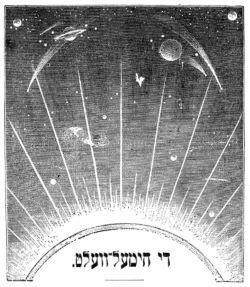
While there hasn’t been a whole lot of original astronomical research published in Yiddish, there are still plenty of Yiddish books about astronomy. Yiddish readers have always been curious to know about the world around them, and that includes the natural world. When it comes to astronomy there are too many books to include them all, but here are two by authors who were, in their time, quite adept at this kind of thing.
Read Heavens and Earth: Astronomy for the People by Philip Krantz
The World of Tomorrow
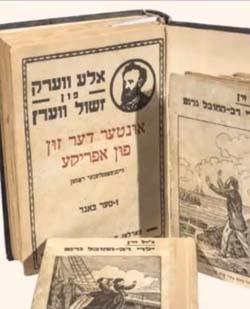
Yiddish readers weren’t just interested in real-life scientific discoveries, but also in where those discoveries might lead. In other words, they liked to read science fiction. While there has been some original SF published in Yiddish, there have also been translations from other languages, including works of the seminal French writer Jules Verne.
Live Long and Prosper
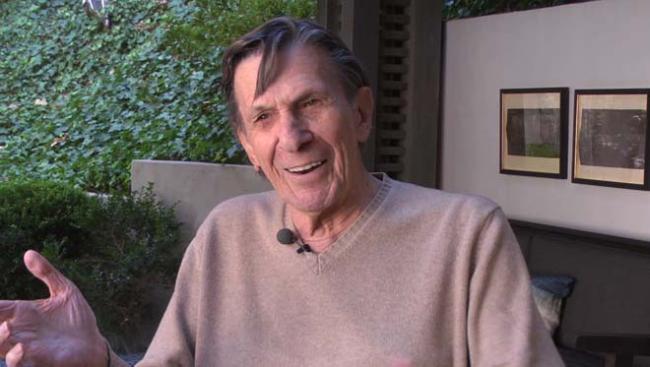
I’m not sure who the most famous science-fiction Jew is—there are multiple contenders, including well-known writers like Isaac Asimov. But one of them, surely, is Leonard Nimoy, who famously played Spock on the original Star Trek. Nimoy says he improvised the Vulcan salute based on a hand gesture used during the priestly blessing in synagogue. Nimoy was also a Yiddish speaker and was interviewed about his Jewish roots in a 2013 interview with our Wexler Oral History Project.
The Machine That Goes Everywhere
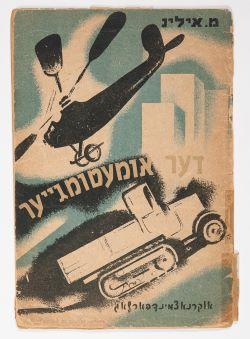
When we think about SF today, we’re just as likely to think of dystopian projections of doom as we are of technological utopias. But in the early decades of the twentieth century, the prevailing spirit was one of scientific optimism about what wonders science and technology might bring. And in 1933, engineer and author of popular science books for kids M. Ilin—the pseudonym of Ilya Yakovlevich Marshak, younger brother of famed Soviet Jewish children’s author Samuil Marshak—was busy bringing the wonders of all the new advances in transportation technology to Soviet children. Translated from his original 1930 Russian text, Der umetumgeyer (The Go-Everywhere Machine) paints a picture of the future of human transportation.
Read about M. Ilin and Der umetumgeyer
Read Der umetumgeyer in the Steven Spielberg Digital Yiddish Library
Jews in Space
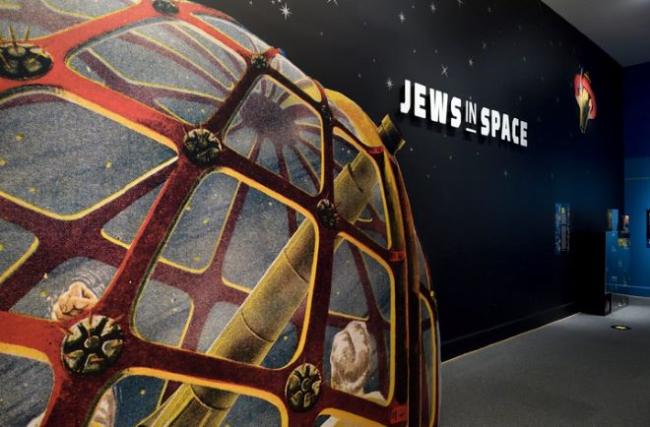
Yiddish books about astronomy were one way that Jews have gone into space, figuratively speaking. But outer space has long inspired Jewish artists, writers, comedians, and thinkers, both religious and secular, to boldly imagine realms beyond our Earth. In this episode of The Shmooze podcast, Joanna Church, director of collections and exhibits at the Jewish Museum of Maryland, talks about an exhibit titled Jews in Space: Members of the Tribe in Orbit.
